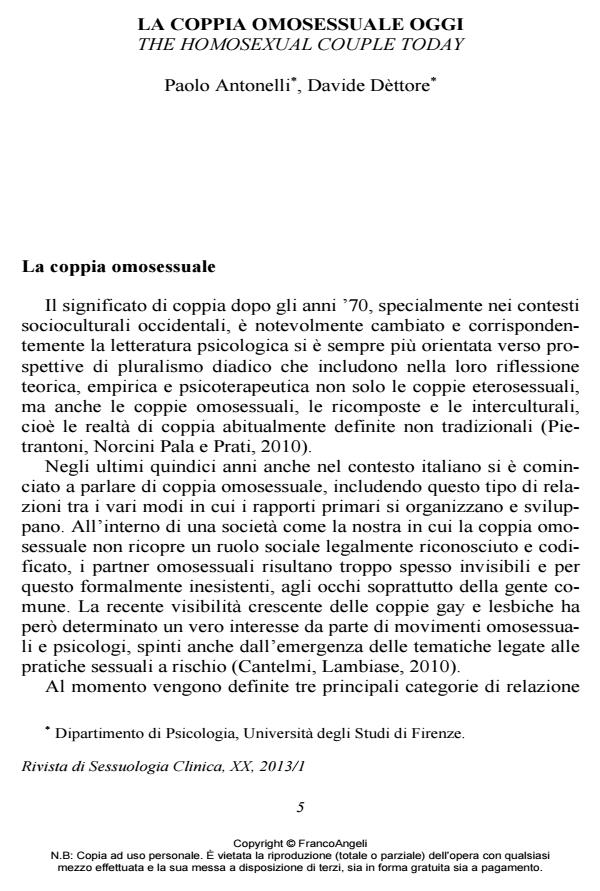La coppia omosessuale oggi
Titolo Rivista RIVISTA DI SESSUOLOGIA CLINICA
Autori/Curatori Paolo Antonelli, Davide Dèttore
Anno di pubblicazione 2013 Fascicolo 2013/1
Lingua Italiano Numero pagine 19 P. 5-23 Dimensione file 524 KB
DOI 10.3280/RSC2013-001001
Il DOI è il codice a barre della proprietà intellettuale: per saperne di più
clicca qui
Qui sotto puoi vedere in anteprima la prima pagina di questo articolo.
Se questo articolo ti interessa, lo puoi acquistare (e scaricare in formato pdf) seguendo le facili indicazioni per acquistare il download credit. Acquista Download Credits per scaricare questo Articolo in formato PDF

FrancoAngeli è membro della Publishers International Linking Association, Inc (PILA)associazione indipendente e non profit per facilitare (attraverso i servizi tecnologici implementati da CrossRef.org) l’accesso degli studiosi ai contenuti digitali nelle pubblicazioni professionali e scientifiche
considerata la crescente rilevanza scientifica e sociale, il presente contributo ripercorre le principali concettualizzazioni e linee di ricerca teorica ed empirica relativamente alle caratteristiche della coppia omosessuale, utili nella pratica clinica così come negli impianti di ricerca, con il fine ultimo di contrastare i tanti e diffusi stereotipi a riguardo delle coppie omosessuali. In dettaglio, verranno analizzati dapprima gli aspetti e le dinamiche salienti riguardanti uno specifico tipo di coppia non tradizionale: la coppia omosessuale, differenziando poi tra la coppia gay e la coppia lesbica; in un secondo momento saranno invece esaminate le somiglianze e le differenze tra le coppie omosessuali e le coppie eterosessuali.
Parole chiave:Coppia gay, coppia lesbica, dinamiche relazionali, stereotipo, psicoterapia con coppie omosessuali, qualità della relazione.
- Gay and Lesbian Couples in Italy: Comparisons with Heterosexual Couples Paolo Antonelli, Davide Dèttore, Irene Lasagni, Douglas K. Snyder, Christina Balderrama‐Durbin, in Family Process /2014 pp.702
DOI: 10.1111/famp.12078 - Le relazioni poliamorose: un'analisi del fenomeno Antonello Deriu, Paolo Antonelli, Davide Dèttore, in RIVISTA DI SESSUOLOGIA CLINICA 1/2016 pp.51
DOI: 10.3280/RSC2016-001003 - Relationship, Social, and Individual Well-Being in Italian Male Same-Sex Couples Paolo Antonelli, Davide Dèttore, in Journal of Gay & Lesbian Social Services /2014 pp.383
DOI: 10.1080/10538720.2014.926231
Paolo Antonelli, Davide Dèttore, La coppia omosessuale oggi in "RIVISTA DI SESSUOLOGIA CLINICA" 1/2013, pp 5-23, DOI: 10.3280/RSC2013-001001